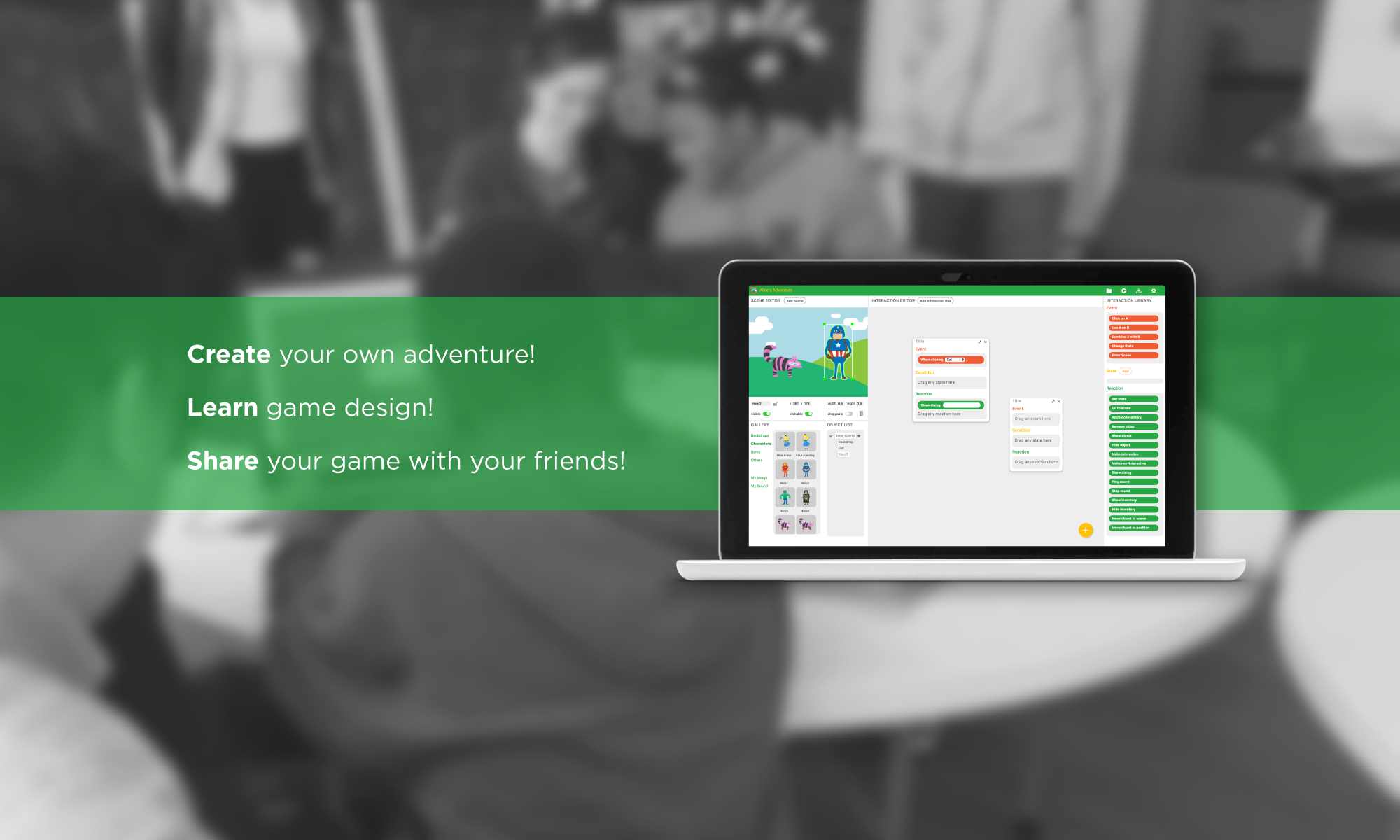Week 9 in the academic calendar coincided with the Game Developers Conference, which meant that Alice’s Adventure was lightly staffed this week. But we had taken into consideration that time we were losing and had decided on methods to make up for it. Despite the absences, we got a lot of work done in terms of general design of the tool, as we focussed on our goals to lead the design direction. After several back-and-forths with our faculty instructors and our client, we finally carved out the right approach to this. We had to pivot from our initial design to satisfy client goals.We placed it in such a way that it doesn’t affect the technological base we have already established, and yet, the client still sees the principles that he wants in there, like adventure game verbs and familiarizing children with game design formats, and the creation of it.
On to this week’s design. Our initial ideas that we’ve discussed and shared so far were centered on a more open framework tool, much like Unity or Photoshop, sprinkled with a bunch of features that allows the user to create a wide range of content, in the style they choose. This meant total freedom of choice, more of a learning curve for the tool, and more preparation material that we would require to actually teach a user how to go about implementing things. After our client meeting with Eric, we decided to take a more procedural, tutorial based approach, where we directly ask the user questions about their games, and their answers and choices craft the game and game logic. Our solution was a step-by-step approach that the user goes through, where they fill out required details which sets the base for the rest of the game. The summary of the steps are:
Step 1: Specify scenes, characters and objects in your game, and where they’re located.
Step 2: Replace placeholders with actual assets in a scene editor, and work on aesthetics.
Step 3: Specify the one interaction which causes you to win the game
Step 4: Specify how scene transitions take place among the scenes declared before
Step 5: Fill up all the other interactions in your game by choosing your object, and also free to edit functionalities of any of the above steps
We’re currently working on creating UI prototypes for the the steps above. We also made a list of the interaction verbs in our game, so that we could run sample games through our design and see if they fit in. Interaction verbs are the conditions, reactions and state, which when put together form an action sentence which describes the behaviour of an object in our tool. All logic implementation in our program would have to be set using the interaction boxes. The following image shows a list of these interaction boxes.

As we progress through iterations, these may be added on/ cut off depending on requirement and functionality. Our attention now turns to halves presentation next week, as our preparation material and presentation skills may need a few iterations themselves. More about it next week…
